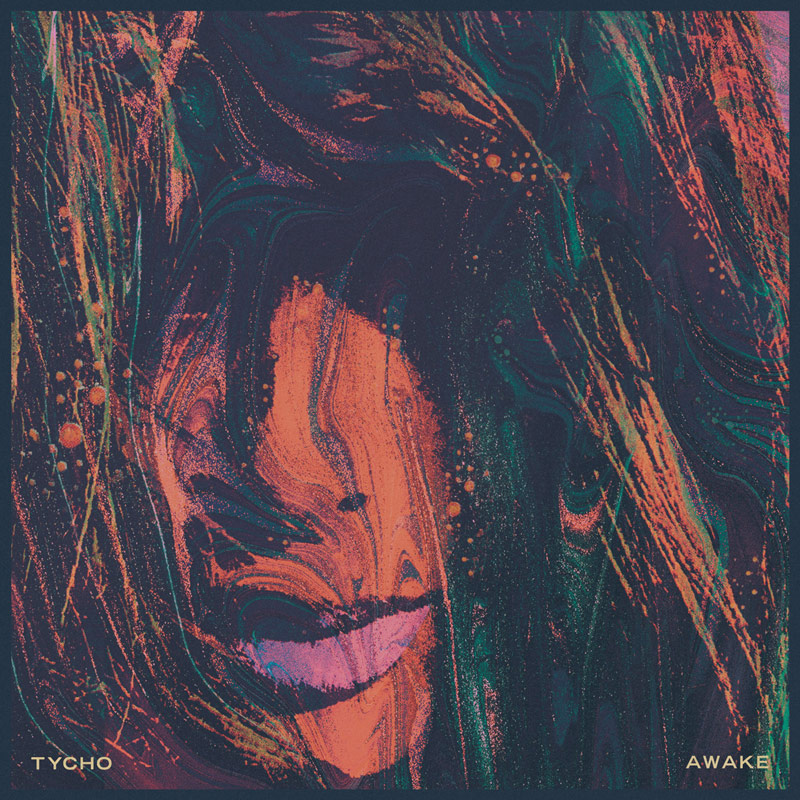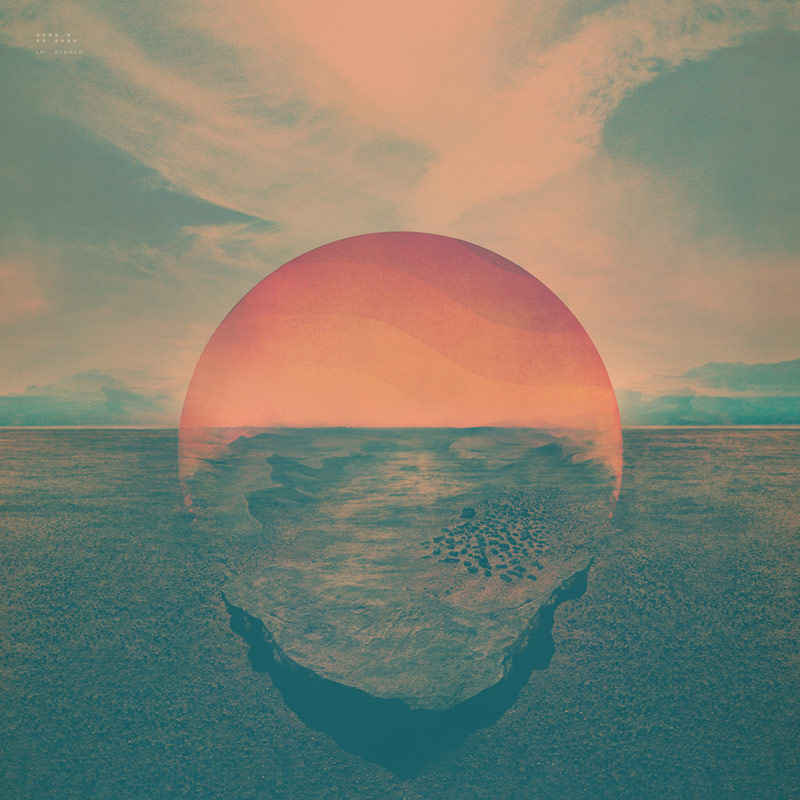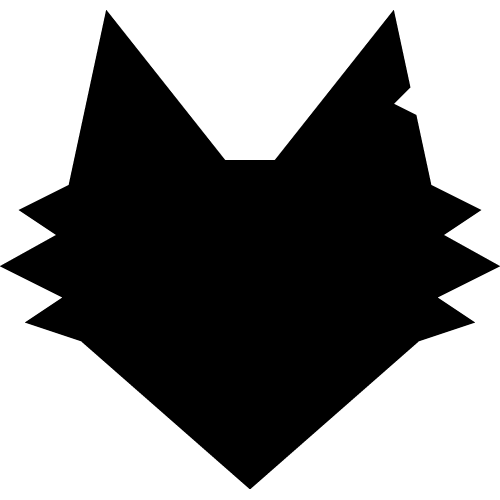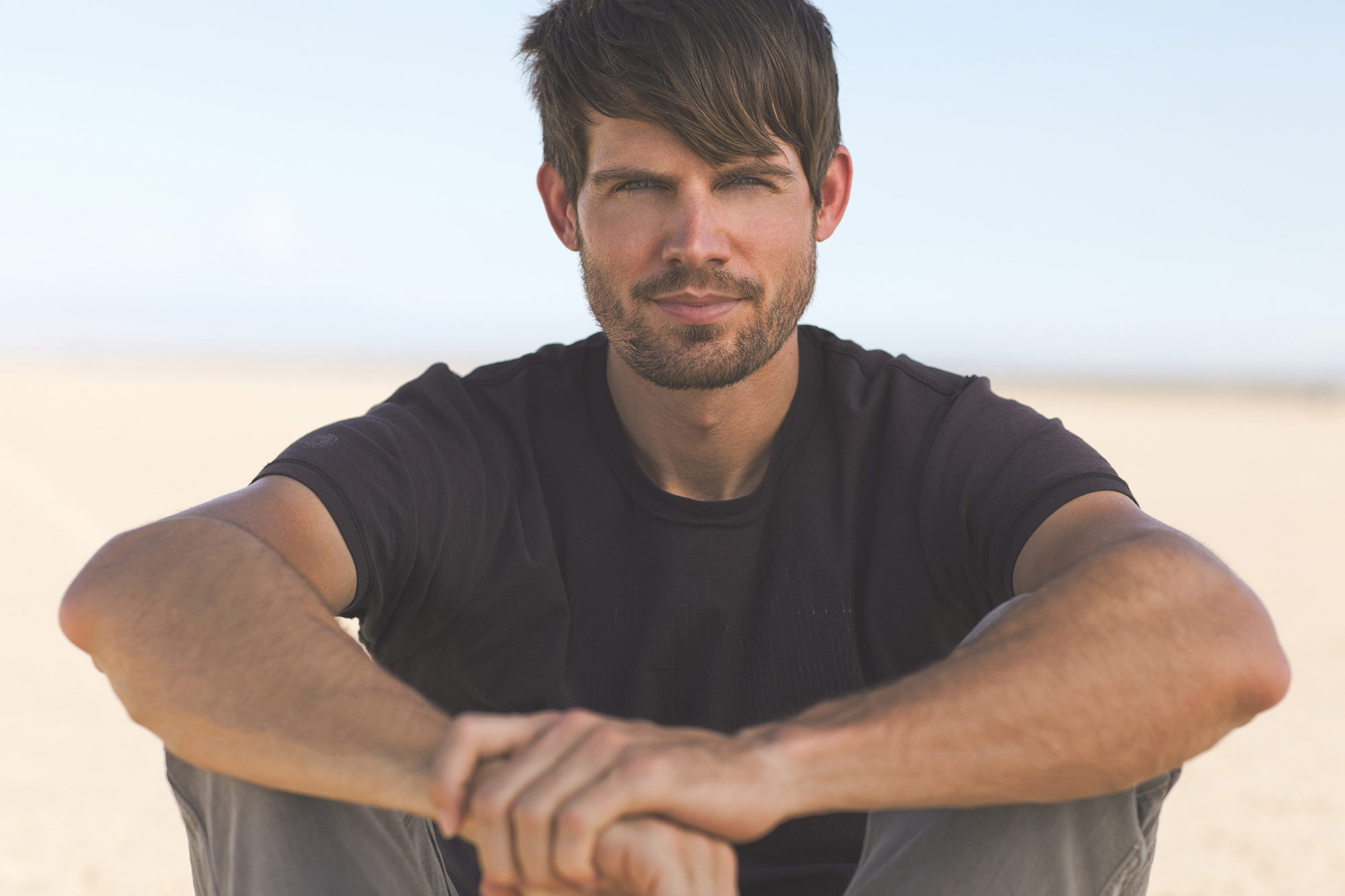
- Interview by Ryan & Tina Essmaker December 10, 2013
- Photo by Tim Navis
Scott Hansen
- designer
- musician
- songwriter
Scott Hansen is a multidisciplinary artist living in San Francisco, California. He records music as Tycho and creates visual work as ISO50.
Interview
Describe the path to what you’re doing now.
It’s been a long and winding path, but it all started with design and music evolving concurrently. In high school, I did pen and ink drawings, but never thought of art as a potential career. In college, I got a copy of Photoshop, and right around that time, I also got some damaged audio equipment from a friend—that set me on the path of thinking about how music was made. I was getting into drum & bass and electronic music and, for the first time, I sat down and wondered how that type of music was created. I started thinking about the creative process and the fact that there are people out there who apparently make music for a living, and that it’s possible. I started making mixtapes and little recordings of my own, which I also designed covers for.
Visual art was always my main thing. I did ISO50, which started out as my portfolio and included some poster art; that evolved into the blog and this whole other thing. I got into design through photography and, as I started to manipulate the photos, I started to incorporate illustrative elements. Eventually, as I started to work more with typography and learned some of the basic principals of design, I started creating work that I would identify as straight-up graphic design.
I didn’t really start creating music earnestly until around 2001. Over the next eight years, what free time I had between design gigs was spent working on the music under the name Tycho. It wasn’t until around 2009 that I decided to focus on music as my primary artistic pursuit. I had done a lot of the things I set out to do with design, and I figured it was time to try something new. I started recording Dive and, although I didn’t quite drop everything to record that album, I definitely focused a lot on it.
I toured with a band for Dive, but when I recorded the upcoming album, Awake, it was the first time I truly dropped everything for a year and just did music. We made the album in about eight months and it’s come full circle because I just designed all the cover art and packaging and am about to start on new visuals. It’s one continuous cycle.
[Tina] That’s awesome. Yeah, I was going to ask if you are just focusing on music right now?
When I say I just started focusing on music, what I mean is that I’ve just started to focus on it professionally. I’m always doing design for the purposes of Tycho, but I see Tycho as this audio-visual space. I think the music has come to the forefront at this point, but the visuals and artwork associated with it are overarching. How I would describe it is that I do design, music, and visual stuff, but I don’t do work outside of the context of Tycho anymore.
Was creativity a part of your childhood or did you have any idea that you would end up doing the things you’re doing now?
I was very much involved in art as a kid, spending most of my time obsessively drawing. But the world doesn’t exactly encourage kids to try to go on these creative career paths, so I never saw art as a future—it was more of a hobby. It was just something I did that I loved, but I also knew I needed to go to college and get a job.
I can’t point to any moment in my life when there was a big, courageous moment where I said, “Oh, I’m going to do it.” It was always very metered and measured out. I did creative things in my spare time while I had a day job, until it reached a tipping point.
I was always visually creative, but I didn’t touch an instrument until I was 21 or 22. A few friends had guitars, but I was scared to approach music. With visual art, there wasn’t as big of an investment; there was always pen and paper laying around. With music, I had to get access to these instruments and then prove myself. There’s a higher barrier to entry. For me, technology has been such a huge part of how I do what I do. I think it took getting into electronic music and understanding the electronic side; I started messing with synthesizers, samplers, and drum machines first. I didn’t get a guitar until I had already been making music for five years; even then, I thought, “Aw, who are you kidding? You can’t play guitar.” Now, it’s definitely the most featured instrument on this next record, but I needed that gateway of technology to help me embrace more traditional forms of music.
“…the world doesn’t exactly encourage kids to try to go on these creative career paths, so I never saw art as a future—it was more of a hobby. It was just something I did that I loved, but I also knew I needed to go to college and get a job.”
[Tina] So, what did you actually study in college?
I started out in computer science, but college was just something I did because I thought I was supposed to. I was always trying to find a way out. I went until I got a job in web design, and then I dropped out.
[Tina] Were you working full-time and doing your stuff on the side until you could transition?
Yeah, I worked full-time for a long time. I was living in Sacramento and it was a lot easier to step away from work there. I was able to go part-time for a while and then, during my last two years in Sacramento, I was on my own, but I was doing a lot of client work—that was the height of when I was doing design. Then I moved to San Francisco to take a job because that’s how I thought I could get back to the city—I had went to school here in the 90s, but then returned to Sacramento. I came back to San Francisco in early 2006 and took a corporate job doing interface architecture and experience design type stuff.
I did my own work at night and then I had a moment where I asked myself what I wanted to do with my life. I loved San Francisco, but was it worth killing myself doing both jobs when I obviously liked one more? Luckily, it worked out so that I was able to quit that job, stay here, and focus on design and music.
Did you have an “aha” moment when you knew what you wanted to do?
In retrospect, it’s easy to say you knew what you were doing. At the time, it’s like, “Well, this is fun and great, but is it really going to be in my best interest?” Like I was saying, I’m a pretty cautious person, and I didn’t often take big leaps of faith in my career—it might look like that, but that’s not how it happened.
Actually, in 2001, I got hurt in an accident. I was in the hospital for a little bit and then I was laid up in my house for six weeks. Luckily, the job I had was understanding and they paid me during my recovery. I spent all of that time working on music, and that was when I made The Science of Patterns EP. Before, I was just throwing together ideas, but it didn’t feel like I could make songs; I was just playing with toys, learning. That was when I realized I had it in me to do full compositions, and I decided to focus more time on music.
That’s really great. Have you had any mentors along the way?
Lots. In design and photography, it was definitely Arnaud Mercier. Sadly, he passed away a couple years ago. He was really instrumental in my learning and is the reason I chose the name ISO50—he shot a lot with Fuji Velvia ISO 50 film. His design site was one of the first I went to; I used his style as a template to emulate what he did so I could learn Photoshop. I finally reached out to him and he was this really cool guy, who was based in France. He told me all about his process and the equipment he used—over the course of the next year, I got my hands on all the same equipment and that’s what led me into photography. He definitely helped me out a ton.
In music, Dusty Brown, was a mentor. He is a Sacramento-based musician who I used to play a lot of shows with when I was starting out. Prior to playing shows, I had just been messing around at home. I went to one of Dusty’s shows and saw that people actually went to watch an electronic musician perform live at a smaller venue. Until then, the only electronic musician I had seen live was Roni Size, and it was a huge show at Bimbo’s 365 Club. Dusty showed me the whole underground scene, and I learned a lot from him about how to put on a show.
[Tina] Do you remember your first show?
I think it was actually supposed to be the day I got hurt so it never happened—I wanna say it was June 19, 2001. The first real show I played was a few months after that, and it was at the old Marilyn’s in Sacramento. I think I played for the other artists who I opened for. (laughing) The first four years were basically convincing people to agree to let us set up a PA and projector, and then playing for the other bands on the bill.
Has there been a point when you’ve taken a big risk?
Yes. Dive, the first real album I made, was a big risk for me. I had to drop a lot of things in my life and my personal life really suffered. Financially, it was hard to fund the whole thing. My previous album, Past is Prologue, wasn’t something I set out to make; it came together over the course of a few years. Dive was a very concerted effort, and I wasn’t able to do much of anything else for a year. Mentally, that was the jumping off point for me, where I decided, “Okay, I’m just going to go ahead and do this.”
“…you throw your work out and don’t realize what it’s doing or whether or not it’s having an effect…But when I talk to people who tell me that a certain song helped them through something, it’s fulfilling to know I was able to contribute to that.”
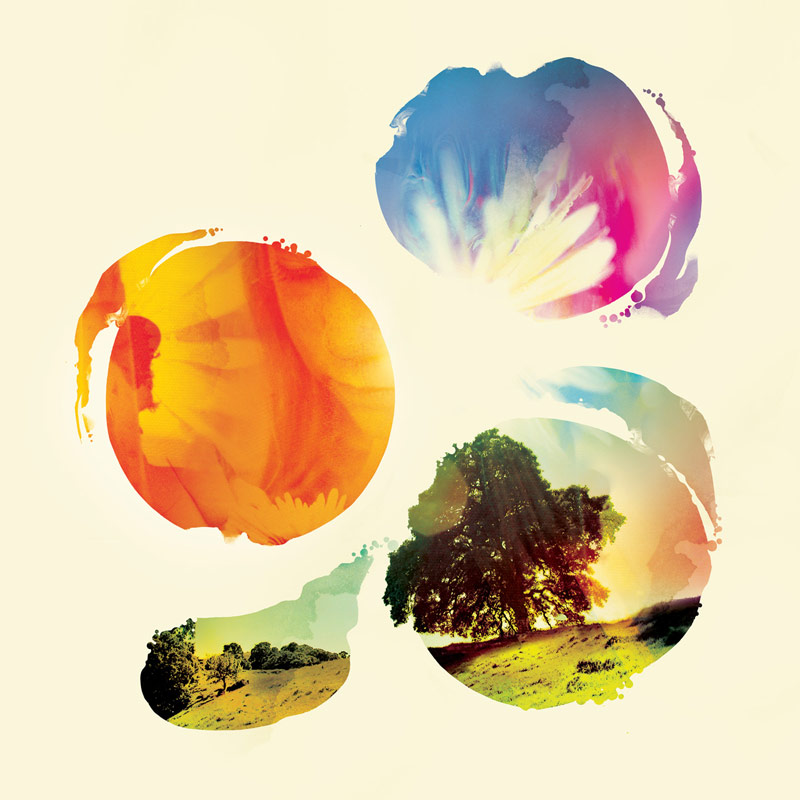
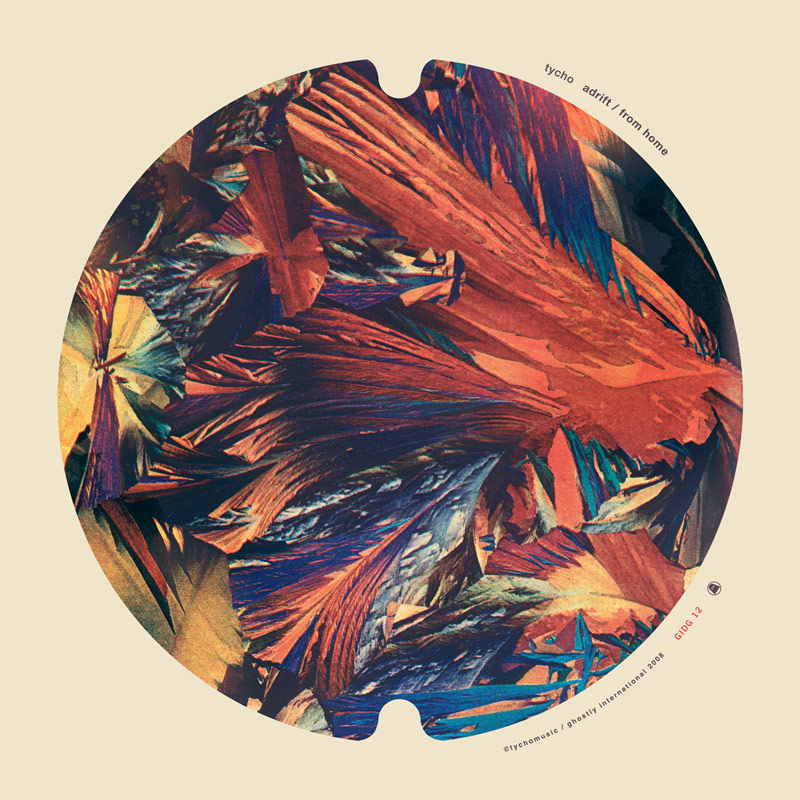
Are your family and friends supportive of what you do?
Absolutely. I wouldn’t have them anymore if they weren’t. (laughing) It’s intense at times, and they’ve all been very supportive, but my wife has been particularly supportive.
Do you feel a responsibility to contribute to something bigger than yourself?
Yeah, and I’ve been trying to figure out what that is. Sometimes you throw your work out and don’t realize what it’s doing or whether or not it’s having an effect or if anyone even cares. But when I talk to people who tell me that a certain song helped them through something, it’s fulfilling to know I was able to contribute to that. For a long time, that was enough, but I’ve recently been asking myself what the point of all this is. It was more of a personal pursuit before; I had ideas I wanted to express, and it was about catharsis. Now, I hope I’m contributing to some sort of artistic consciousness or movement or play my role in pushing forward some sort of sound or idea that a lot of people are a part of. But I’m not quite yet sure of how I’m going to take it beyond the social context of just making interesting music.
Are you creatively satisfied?
Absolutely. More than ever. I feel like a huge weight has been lifted. A weight was lifted with Dive, but it was more about, “Can I make a record?” I had to prove to myself that I could sit down, focus, and make the sacrifices necessary to make a full-length record in a reasonable amount of time. That was huge. That record represented six years of pent-up artistic ideas and concepts that I hadn’t been able to express because I had taken a break from music for a long time.
But this newest album was the first high-pressure record. It’s the first time I’ve worked extensively with others. I realized I wanted this to be a band record. I’d always felt pressure in design, but that was the first time I felt pressure on the music side of things as we had a deadline and were pretty much starting from scratch. I had a label and an organization of people around me who were saying, “Okay, it’s time to go make a record again.” I thought, “Can I just sit down and decide to good make music?” I had never been in that position before. It was a huge weight off of my shoulders to make this record happen. It was fulfilling to know that it was possible. That had a lot to do with the involvement of the other guys, Rory O’Connor and Zac Brown; collaborating with them opened up a whole new world of possibilities for me.
You’ve already done a lot, but are there things that you’re interested in doing in the next 5 to 10 years?
I think video and animation are what I want to get into next. I feel suited for them because, when I think about the middle ground between design and music, it’s motion. It’s a visual thing, but it’s moving and changing. With static design, I never felt like I could fully express the ideas or spaces I wanted to create because it couldn’t evolve. It’s beautiful and can evoke meaning and be layered, but a song can have arcs and movements—and video is the same way. That’s why visuals are so important to our shows—they take my visual sensibilities and transpose them over the ideas of movement and change. But the problem is that I just don’t have time right now; video takes a whole lifetime of learning. Yet it’s something I’d like to get better at so that I can express myself through it in the same way I do with music and design.
If you were to give advice to a young person starting out, what would you say?
I think about that a lot. I don’t have any super insightful tricks of the trade. It’s all about time and pressure. If you love a thing and are willing to work hard at it, then keep pushing and never give up on it. I know that’s kind of cliché, but that’s what it’s been about for me. There have been a small handful of people who’ve had success with their first thing, but for the other 99% of us, it’s this long path. For me, everything I’ve ever accomplished or things that seemed like accomplishments were just the end of a road that I looked back on and said, “Man, I really wish I was back in that moment, working toward this thing instead of having it.” It’s all about the journey. Keep at it.
You’re in San Francisco, right?
Yeah. I’ve been here for about seven years this time.
How does living there impact your creativity?
You know, I’ve never really been able to pinpoint that. I grew up in Sacramento, where I spent most of my adult life, and I loved it there. That’s where my early stages of learning and developing happened, but I felt like it was time for a change. I’m sure that getting into an environment with a different energy influenced me in a big way, but I can’t quantify it. I do think it forced me to step out of who I was or who I perceived myself to be. When you live in a place for so long, it stops you from thinking outside of who you are. Here, in San Francisco, I’ve realized that I can reinvent myself and evolve as much as I want to. That’s been the biggest thing: it’s taught me a new way of looking at my own identity and that has had far reaching effects on my creative decisions.
Is it important to you to be part of a creative community of people and do you have that in San Francisco?
I was going to touch on that. That’s the thing I miss. In Sacramento, we had a very tight-knit community of electronic musicians with likeminded goals and aspirations, and that was great. A few of us—Chachi Jones, Dusty Brown, Park Avenue, and Fruitbat—formed this collective and put on shows. It was amazing; we learned so much from each other and it was a great time to grow for all of us, I think.
Once I got to San Francisco, I felt really isolated. I think it might be because I’ve met a lot of my friends through work—I worked at Adobe—and we’re still friends, but it was a different kind of creative atmosphere than the music scene I had been into. I never really got into the music scene here, although I did meet Christopher Willits through my label, Ghostly International; he and I have become good friends, but he’s one of the few musicians I’ve met here. I don’t go to coffee shops to hang out and talk about collaboration. I’d love to, but I’m not plugged into that scene, if one exists. I also think I keep to myself these days because, when I am home, I try to enjoy some of my downtime. When you’re on the road a lot, the last thing you want to do is sit in a bar and watch a show during your time off.
What does a typical day look like for you?
There is no typical day and that’s the beauty of it. Today I’m going down to this retail space that I share to sort through products, package some vinyl, and ship out orders. Yesterday I did a bunch of banners for the blog to announce the Past is Prologue reissue record. The day before that I was working on production for the live show that we have coming up on Friday. You can’t really say it’s design or music because there are so many aspects of both of those things. They’re different pursuits and I like them both equally as much.
Is there any music you’re really into right now?
Absolutely. Amok, the album from Atoms for Peace. What’s cool is that I don’t listen to music much while I’m making a record because I’m listening to sound for 8–10 hours a day during that time. Now, I’ve been discovering all this stuff that came out while I was recording, and that album has been really inspiring. Midlake just came out with Antiphon, which I like a lot, too.
What are your favorite movies and TV shows?
I watch quite a bit of stuff on Netflix. I like to watch shows from beginning to end, straight through the season. I have a few shows on rotation: Curb Your Enthusiasm, It’s Always Sunny in Philadelphia, and Tim and Eric.
Do you have a favorite book?
Oh, what have I read recently? I used to read a lot more. I think I like to spend my downtime turning my brain off these days. I read the Steve Jobs biography, which was interesting.
What’s your favorite food?
Probably the deep dish pizza at Little Star on Valencia. Every time I come back from tour, my wife asks me where I want to eat and I always say Little Star. (laughing)
Nice. Alright, last question. What kind of legacy do you hope to leave?
(laughing) To even think of it in those terms is a bit of a stretch. I feel like everything is so temporary these days, especially with digital stuff. I just imagine my work vaporizing over the next 10–20 years. I look at people who were huge heroes of mine and the public consciousness of them now—do they have a legacy? I guess that maybe it’s the influence they’ve had on artists like me. That’s all I can hope for: maybe someone who is an up and coming artist now will reflect on the lessons they learned from my music, or maybe I will have inspired them to make something.
“…everything I’ve ever accomplished or things that seemed like accomplishments were just the end of a road that I looked back on and said, ‘Man, I really wish I was back in that moment, working toward this thing instead of having it.’ It’s all about the journey.”
